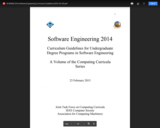
Curriculum guidelines for undergraduate degree programs in software engineering.
- Subject:
- Applied Science
- Computer Science
- Material Type:
- Primary Source
- Author:
- IEEE
- ACM
- Date Added:
- 02/07/2023

Curriculum guidelines for undergraduate degree programs in software engineering.
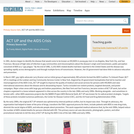
This collection uses primary sources to explore AIDS activism during the 1980s. Digital Public Library of America Primary Source Sets are designed to help students develop their critical thinking skills and draw diverse material from libraries, archives, and museums across the United States. Each set includes an overview, ten to fifteen primary sources, links to related resources, and a teaching guide. These sets were created and reviewed by the teachers on the DPLA's Education Advisory Committee.
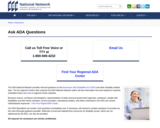
The ADA National Network provides informal guidance on the Americans with Disabilities Act (ADA) and other disability-related laws. The ten regional Centers that comprise the ADA National Network staff a toll-free information line and respond to inquiries submitted online via email or regional Center websites.
Business owners, architects and designers, representatives of state and local government agencies, employers, people with disabilities and their family members, service providers, educational entities, and others interested in the ADA can receive individualized responses - Find Your Region/ADA Center.
Our ADA Specialists can answer most questions immediately and, if necessary, will research complex questions to provide you the most thorough guidance possible. Referrals to local and state/territory resources for disability issues, which are not addressed by the ADA, can also be provided.

Sources: Riddle1090 document related to Automatic dependent surveillance broadcast.
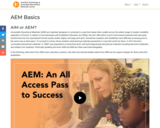
AIM or AEM?
Accessible Educational Materials (AEM) are materials designed or converted in a way that makes them usable across the widest range of student variability regardless of format. In relation to the Individuals with Disabilities Education Act (IDEA), the term AIM refers to print instructional materials that have been transformed into four specialized formats (audio, braille, digital, and large print text). Sometimes students with disabilities have difficulty accessing print in the same way as their peers. To succeed in school, these students need learning materials presented in a way that works for them. In 2014, the term "accessible educational materials" or "AEM" was expanded to include both print- and technology-based educational materials including electronic textbooks, and related core materials. Practically speaking the terms AIM and AEM are often used interchangeably.
In the following video learn from AEM users, educators, parents, and state and national leaders about how AEM can be a game changer for those with print disabilities.
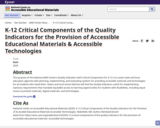
The purpose of the National AEM Center’s Quality Indicators with Critical Components for K-12 is to assist state and local education agencies with planning, implementing, and evaluating systems for providing accessible materials and technologies for all students who need them. States and local school districts will find the Quality Indicators useful for implementing statutory requirements that mandate equitable access to learning opportunities for students with disabilities, including equal access to printed materials, digital materials, and technologies.
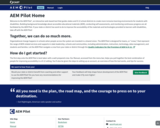
AEM Pilot Home
Welcome to the AEM Pilot*, an interactive web-based tool that guides states and K-12 school districts to create more inclusive learning environments for students with disabilities. Building background knowledge about accessible educational materials (AEM), conducting self-assessments, and monitoring continuous progress are all facilitated by the AEM Pilot. If your state or district has work to do to improve the accessibility of the materials and technologies provided to learners with disabilities, take off with the AEM Pilot!
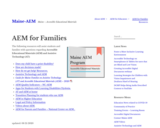
AEM for Families
Accessible Educational Materials: The following resources will assist students and families with questions regarding Accessible Educational Materials (AEM) and Assistive Technology (AT):
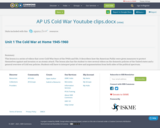
This lesson is a series of videos that cover Cold War fears of the 1940s and 50s. It describers how the American Public were given measures to protect themselves against and invasion or an atomic attack. The lesson also has the student to view several videos on the domestic policies of the United states and a general overview of Cold war policies. Students will have to interpret point of view and argumentation from both sides of the political spectrum.
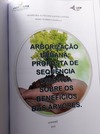
ESTE PRODUTO EDUCACIONAL FOI PRODUZIDO A PARTIR DE UM ESTUDO DE PESQUISA DE MESTRADO,VOLTADO A CAPACITAÇÃO DE PROFESSORES DA EDUCAÇÃO BASICA NA MODALIDADE ESPECIAL.O QUAL FOI PRODUZIDA UMA SEQUENCIA DIDÁTICA COMO ESTRATEGIA DIDÁTICA PARA SE TRABALHAR O TEMA ARBORIZAÇÃO URBANA E EDUCAÇÃO AMBIENTAL.
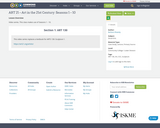
Video series. This class makes use of Seasons 1 - 10.
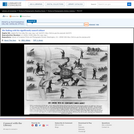
Entered according to Act of Congress in the year 1864 by M.E. Goodwin in the Clerk's Off. in the Dist. Court of the United States for the Southern Dist. of N.Y. Designed by R.D. Goodwin.|Title appears as it is written on the item.|Forms part of: American cartoon print filing series (Library of Congress)
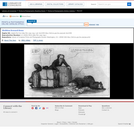
A satire on enforcement of the "gag-rule" in the House of Representatives, prohibiting discussion of the question of slavery. Growing antislavery sentiment in the North coincided with increased resentment by southern congressmen of such discussion as meddlesome and insulting to their constituencies. The print may relate to John Quincy Adams's opposition to passage of the resolution in 1838, or (more likely) to his continued frustration in attempting to force the slavery issue through presentation of northern constituents' petitions in 1839. In December 1839 a new "gag rule" was passed by the House forbidding debate, reading, printing of, or even reference to any petition on the subject of abolition. Here Adams cowers prostrate on a pile composed of petitions, a copy of the abolitionist newspaper the "Emancipator," and a resolution to recognize Haiti. He says "I cannot stand Thomson's [sic] frown." South Carolina representative Waddy Thompson, Jr., a Whig defender of slavery, glowers at him from behind a sack and two casks, saying "Sir the South loses caste whenever she suffers this subject to be discussed here; it must be indignantly frowned down." Two blacks crouch behind Thompson, one saying "de dem Bobolishn is down flat!" Weitenkampf cites an impression with an imprint naming Robinson as printer and publisher, this line being apparently trimmed from the Library's impression. The drawing style and handling of the figures strongly suggest that "Abolition Frowned Down" is by the same Robinson artist as the anonymous "Called to Account" and "Symptoms of a Duel" (nos. 1839-10 and -11).|Drawn by HD?|Entd . . . 1839 by H.R. Robinson . . . Southn. Dist. of N.Y.|Title appears as it is written on the item.|Weitenkampf, p. 59.|Forms part of: American cartoon print filing series (Library of Congress)|Published in: American political prints, 1766-1876 / Bernard F. Reilly. Boston : G.K. Hall, 1991, entry 1839-12.
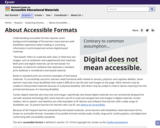
Understanding accessible formats requires some background knowledge of the barriers many learners with disabilities experience when reading or accessing information in print-based and certain digital-based materials.
"Text-based" refers to materials with static or fixed text and images, such as textbooks and supplemental text materials. Both print and digital materials can be text-based. For example, an electronic textbook that replicates a standard print textbook is considered a text-based material.
Books in standard print are common examples of text-based materials. To successfully use print, learners need functional skills related to sensory, physical, and cognitive abilities. Some learners may have visual disabilities that make it difficult to see the text and images on the page. Other learners may be unable to hold printed materials because of a physical disability. Still others may be unable to read or derive meaning from the printed text because of a learning disability.
Certain digital materials also have text and images. Specifically, text-based digital materials are not consistently designed for use with assistive technology (AT). Some learners use AT to read and navigate text and images in digital materials. Screen readers, text to speech, and switches are a few examples of AT devices and software that learners with a wide range of disabilities use. To prevent barriers for learners who use AT, see Vetting for Accessibility.
Because of the frequent barriers presented by text-based materials, some learners with disabilities need alternative forms, known as accessible formats. Examples of accessible formats include audio, braille, large print, tactile graphics, and digital text conforming with accessibility standards.
The term accessible format is defined in section 121 of the Copyright Act, known as the Chafee Amendment:

This resource tells about the origin of BranchED's OER initiative.

CropWatch is a central resource for University of Nebraska–Lincoln Extension information on crop production and pest management. It is written by Extension Educators and Specialists and produced by IANR Media in the UNL Institute of Agriculture and Natural Resources.
Information is organized into two key areas, each of which offers thousands of crop-specific articles for Nebraska producers and crop consultants:
The CropWatch newsletter, which includes timely articles published to the site's home page. New issues are published weekly during the heart of the crop production season and generally biweekly during the remainder of the year. Older articles are archived for later review.
CropWatch also includes:
- Calendar of ag events and programs
- Daily news and updates via Twitter at UNL_CropWatch (also displayed on the home page)
- Ag decision-aid tools and resources from UNL Extension
- Content tags at the end of individual stories to help you located related articles released since April 2016.
- Use the Search box in the top right of every page or the Archives to locate additional articles.
- Crop-specific production and pest management sections, with additional sites for whole farm and production systems. Use the top red-bar navigation to access specific crop, management and related topics.
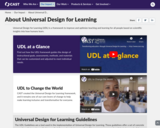
Universal Design for Learning (UDL) is a framework to improve and optimize teaching and learning for all people based on scientific insights into how humans learn.
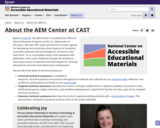
About the AEM Center at CAST
Share:
National Center on Accessible Educational Materials logo
Based at CAST, the AEM Center is funded by the Office of Special Education Programs at the U.S. Department of Education. We work with states and districts to build capacity for developing and sustaining robust systems for providing accessible materials and technologies for all learners who need them. To us, accessibility means that individuals with disabilities—from early childhood through the workforce—have equal access to materials and technologies for reaching educational outcomes and advancing in employment.
We provide three levels of technical assistance:
Universal technical assistance is available to everyone. You’ll find products and services throughout our website and collected on our resources page. Webinars and conference presentations are listed on our events page.
Targeted technical assistance describes the Center's strategic collaborations to address problems of practice in early childhood programs, higher education, and workforce development. Supports for families are also a part of our targeted technical assistance.
Intensive technical assistance describes the Center's capacity-building activities with a small cohort of states. This partnership is designed to produce practices that can be scaled nationally.
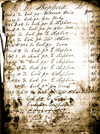
Lincoln, Abraham. 1858. "First Debate with Stephen A. Douglas." Excerpts of speech delivered at Ottawa, Illinois, August 21, 1858. https://www.nps.gov/liho/learn/historyculture/debate1.htm

A selection of Library of Congress primary sources exploring Abraham Lincoln and his national role. This set also includes a Teacher's Guide with historical context and teaching suggestions. Speeches, correspondence, campaign materials and a map documenting the free and slave states in 1856 chronicle Lincoln���s rise to national prominence